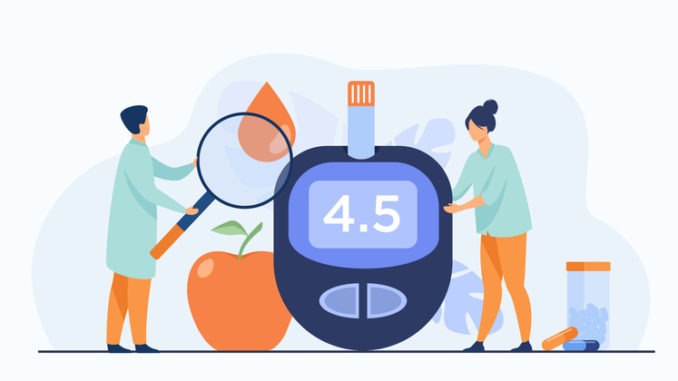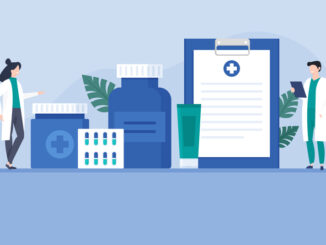
Progress may have slipped, but general practices are finding innovative ways to catch up. Emma Wilkinson reports on calls for more guidance on new drugs and more remote monitoring to support self-management
This is an edited version of an article that originally appeared on The BMJ
“There will be a need for diabetes’ management to catch up,” as progress made before the pandemic will have slipped, says Partha Kar, NHS England’s national specialty adviser for diabetes, and a consultant at Portsmouth Hospitals NHS Trust.
“There will be a lot of people who have not had checks for two years,” he tells The BMJ, adding that primary care has been under huge pressure during the pandemic and is now at the forefront of the vaccine programme. About 90% of patients with diabetes have type 2 – about 3.4m people in England – and are managed in primary care.
The National Diabetes Audit measures the effectiveness of diabetes care against standards set by the National Institute for Health and Care Excellence (NICE) in England and Wales as a way of driving improvement. This includes monitoring how many people with diabetes have eight key checks every year; HbA1c, blood pressure, cholesterol, serum creatinine, urine albumin, foot check, body mass index and smoking. Early figures indicate about a 35-40% reduction in those checks in 2020. “The worry is the impact of that, and we are tracking to see what impact it has,” says Kar.
Technology and support for self-management will be key after the pandemic, he adds, as the NHS tries to overcome some of the slippage. “This is why we have been pushing so hard for the rollout of remote monitoring devices. We need more of that in the NHS,” he says, as around 45% of all patients with type 1 diabetes in England now have a Libre glucose monitoring system. “The pandemic has put a rocket booster under these programmes, and type 1 diabetes education as well.”
There are plans for more NHS online support tools, including the Healthy Living platform, which gives people with type 2 diabetes guidance on managing the condition. “Diabetes is a lot about self-management and peer support, and that is how the NHS will get back,” says Kar.
Avoiding a backlog in primary care
The full picture of the pandemic’s effect on diabetes control won’t be apparent until publication of the next National Diabetes Audit, expected at the end of this year. Anecdotally, however, GPs say that they’re seeing much poorer glucose control and that patients who were considered prediabetic are crossing the threshold.
Stephen Lawrence, GP and an associate clinical professor at Warwick University, says that although practices had to switch to different ways of working to keep patients safe, data from the Royal College of General Practitioners show that many practices managed to provide ongoing care for diabetes.
Physical and psychosocial aspects of lockdown – such as being out of the usual routine, stress and anxiety, or losing motivation and opportunities to be active – will have taken their toll, says Lawrence. “Sadly, I feel that’s going to contribute to greater morbidity and mortality than issues around access to primary care,” he says. “I’ve seen people newly diagnosed with type 2 diabetes – people with non-diabetic hyperglycaemia who were leading up to diabetes over a number of years, and lockdown has brought it on sooner.”
Becky Haines, a GP in Gateshead and the town’s clinical lead for diabetes, says that her practice and others have worked hard to avoid a large backlog and, under a local scheme, to review multiple long term conditions together, either face-to-face or virtually, depending on patient preference. “By April 2020 [after lockdown in mid-March] we were back up and running,” she tells The BMJ. “Not all practices started that early, but they did what they could. I know of some practices where, for multiple reasons, they didn’t start until November, and then the second wave hit.”
Haines’s practice is close to having done a normal number of annual reviews and is seeing many patients with high glucose levels. “I work in a deprived area,” she explains, “and many people have been furloughed, or lost their job, or had relatives who have been unwell or shielding, and they’re not in a place to make big lifestyle changes. We’re going to have to work really hard to support people in the next five years to get their results lowered again. There will need to be extra resources.”
With some nurses currently busy doing COVID vaccinations, primary care practices are having to consider different approaches to how they do their annual reviews, including use of technology, avoiding multiple visits and duplicated work; one-stop community hubs and the training of healthcare assistants to deliver some aspects are potential options. “We’re thinking about what we can do a bit more innovatively,” she says. “Practices may think about group consultations to try to get more peer support.”
However, she adds that guidance is also needed from bodies such as NICE on the most appropriate use of newer drugs for type 2 diabetes, such as glucagon-like peptide-1 receptor agonists, and sodium-glucose co-transporter-2 inhibitors, which have been shown to reduce the risk of heart disease and stroke and not just to lower HbA1c. The last NICE update on drug management was in 2015.
“At the moment it depends on the individual healthcare professional and how up-to-date their knowledge is,” says Haines. “NICE guidance is long overdue; that’s going to need to be looked at as a matter of urgency.”


Be the first to comment